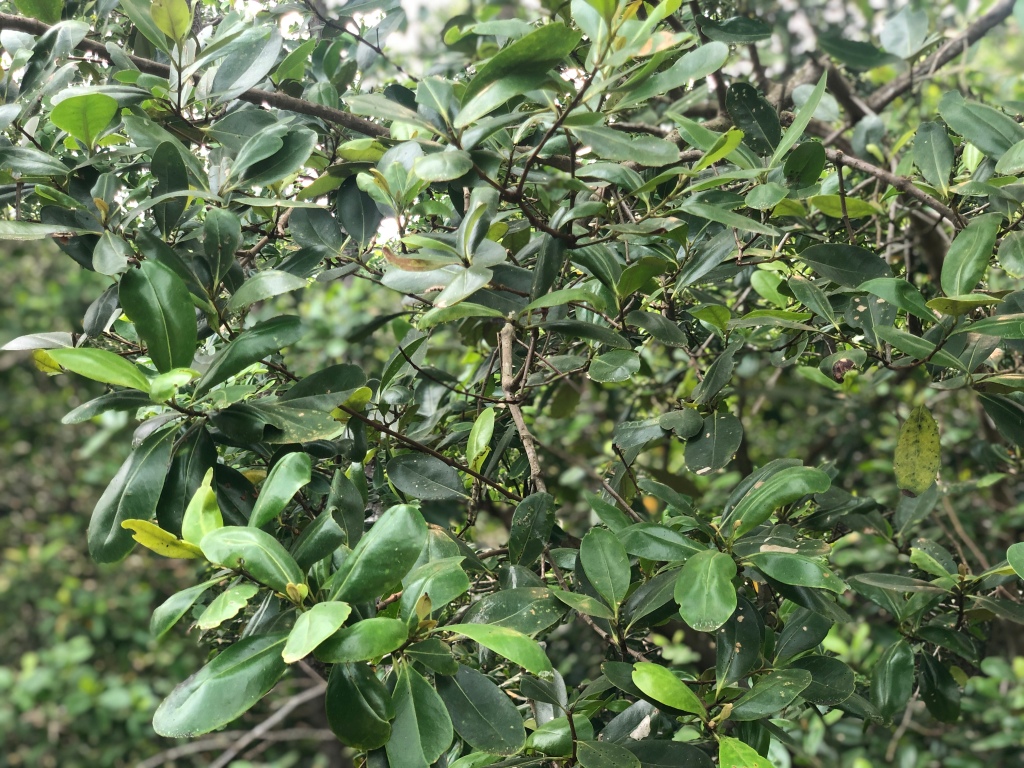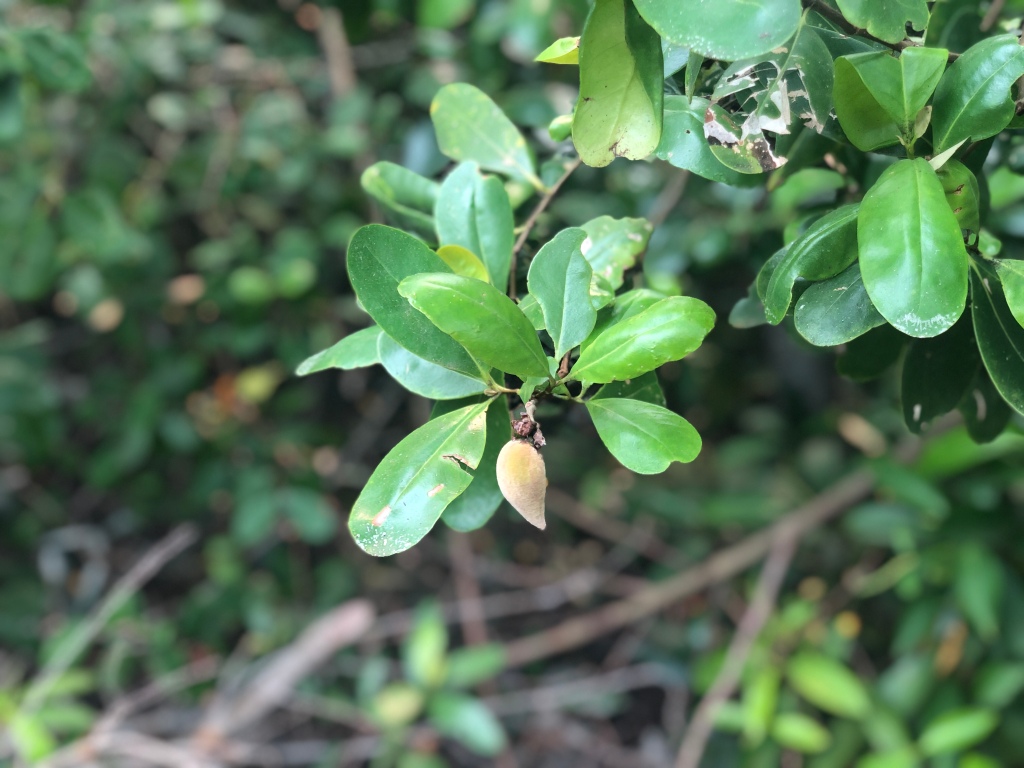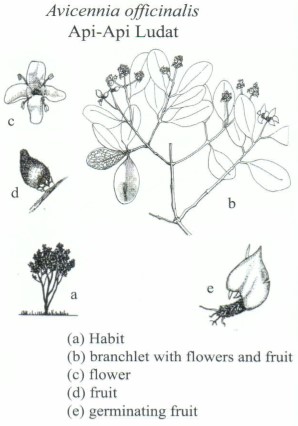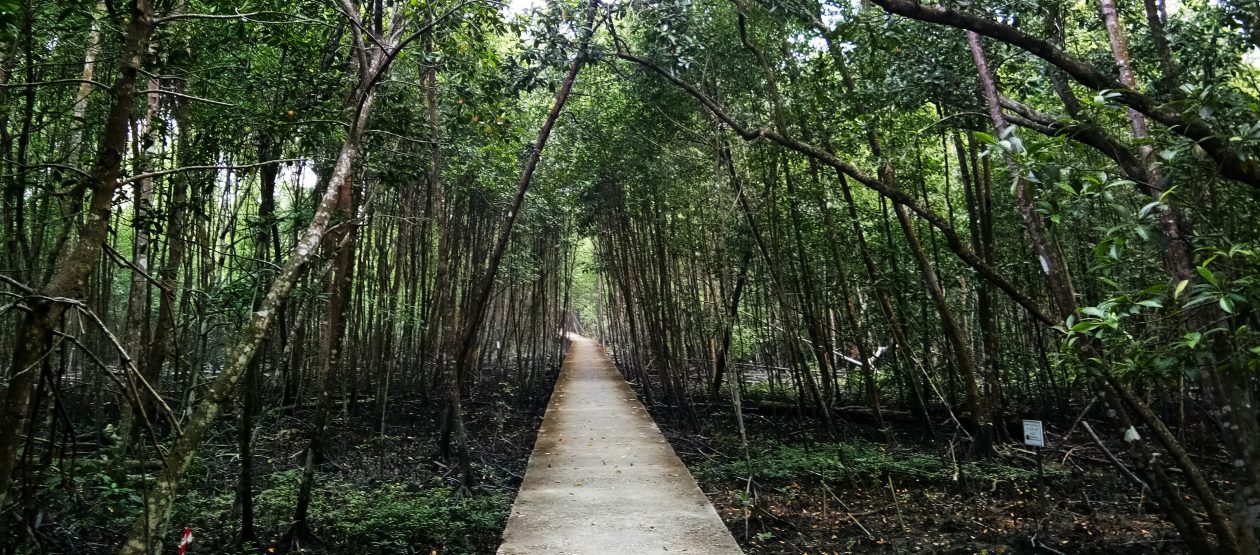CLICK BELOW FOR AUDIO GUIDE
Avicennia officinalis, or commonly known as Indian mangrove is commonly found at the lower intertidal zone on soft, recently consolidated mudbanks, river mudbanks or at river mouths. The plant can be found in Bangladesh, Brunei, Cambodia, India, Indonesia, Malaysia, Myanmar, Papua New Guinea, Philippines, Singapore, Sri Lanka, Thailand, and Vietnam. In Malay, it is called as api-api ludat.

The tree can grow up to a height of 20 meters. The trunk has low aerial roots; the bark is smooth and reddish-brown when young and grey-brown when old and is commonly fissured. The “pencil” like pneumatophores are 20 to 30 cm tall. The leaves are egg-shaped to elliptical with a rounded tip; arranged in opposite pairs with bright shiny green on the top surface and pale with fine hairs on the under surface.

The fruit is a velvety pale grey-green, compressed, elongated and somewhat elliptical in shape. The fruit can be eaten and the wood is used as fuel wood. The flower is the largest among the Avicennia species has a diameter of 6 to 10 mm when expanded. It is orange-yellow to lemon-yellow in color.

The wood used to construct boats, houses, and wharves as well as has been recommended for creosoted paving blocks. Its wood is attractive enough of grain to be useful in cabinetry. The bark is used for dying cloth, while the ash is for washing cloth purpose in India. The bark and roots are used for tanning, whereas the bark resin is used in traditional medicine as a contraceptive. Javanese and others may consume the bitter fruits and seeds after rather elaborate processing. The branches are lopped and given to cattle for fodder.
